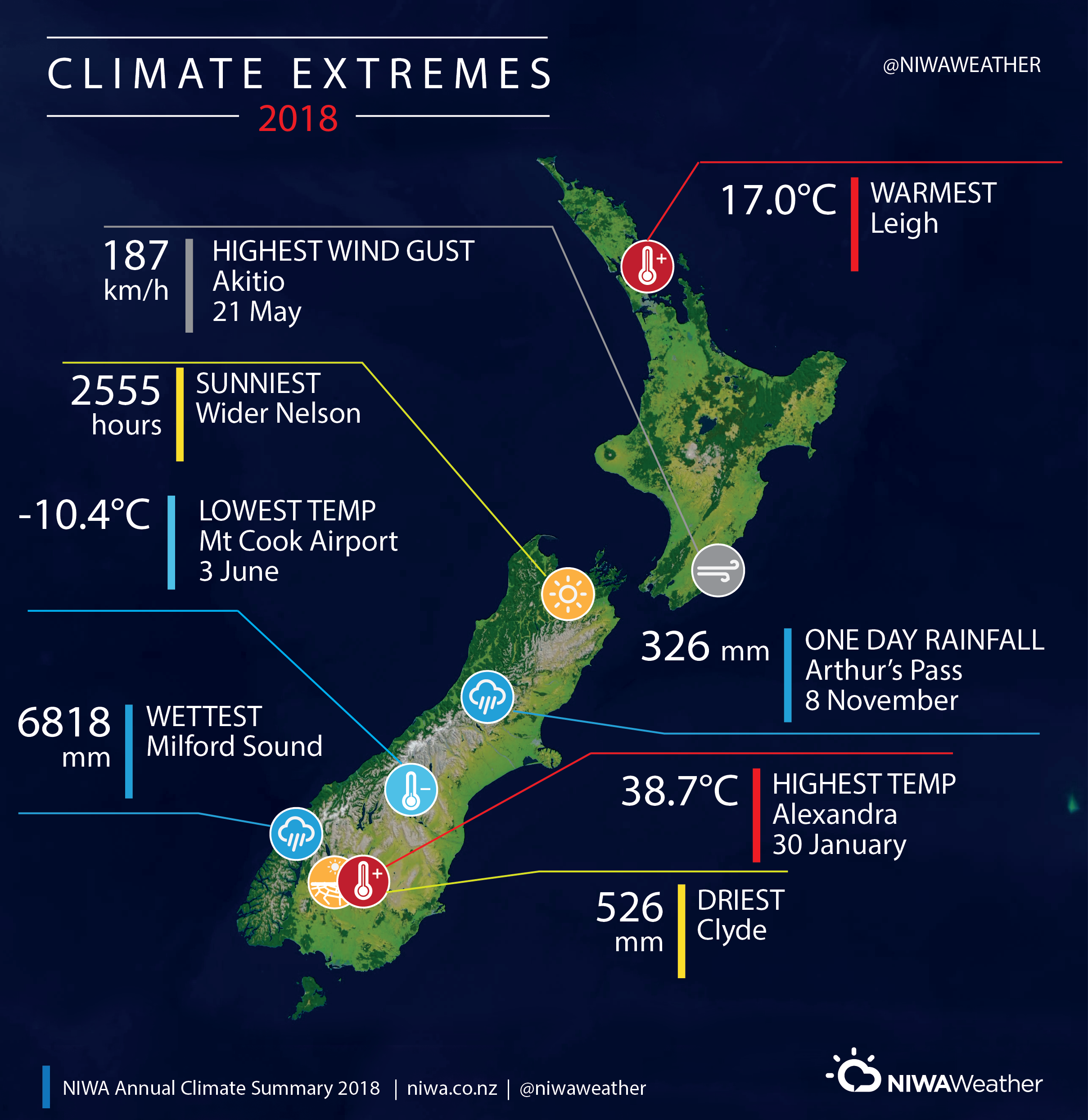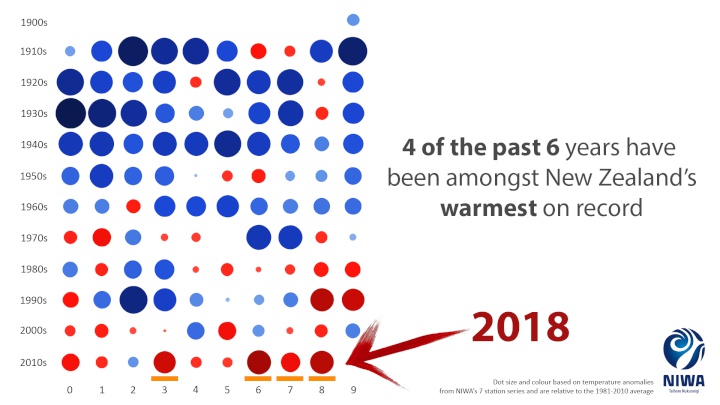2018: New Zealand’s equal-2nd warmest year on record

NIWA National Climate Centre
Annual
Climate Summary
New Zealand Climate Summary:
2018
2018: New Zealand’s equal-2nd warmest year on record
| Temperature | Annual temperatures were above average (+0.51°C to +1.20°C above the annual average) across the majority of New Zealand, including much of the North Island as well as the western and southern South Island. A small strip of well above average (>1.20°C from average) temperatures were observed in southern Manawatu-Whanganui. Elsewhere, near average (within -0.50°C to +0.50°C of average) temperatures occurred in parts of southern Canterbury, Otago, small parts of Auckland and the Far North. 2018 was the equal 2nd-warmest year on record for New Zealand, based on NIWA’s seven-station series which began in 1909. |
| Rainfall | Yearly rainfall in 2018 was above normal (120-149% of the annual normal) across much of the eastern and upper South Island, as well as parts of Wellington, Wairarapa, Bay of Plenty, northern Waikato, and Auckland. Well above normal rainfall (>149% of normal) was observed in portions of southern Canterbury. Rainfall was near normal (80-119% of normal) for the remainder of New Zealand. |
| Soil moisture | 2018 began with below or well below normal soil moisture nearly nationwide, but soil moisture in the North Island and upper South Island gradually increased during January. Widespread heavy rainfall from ex-tropical cyclones Fehi and Gita during February resulted in well above normal soil moisture across most of New Zealand. Near to above normal soil moisture persisted through autumn, with near normal soil moisture widespread during the winter. During spring, soils became drier than normal in much of the country, although remained wetter than normal in southern Canterbury and Otago. Heavy rain in November brought widespread wetter than normal soils to the east of both islands, while a heavy rain event around Christmas did the same for the upper North Island. As of 1 January, soils were much wetter than normal in the upper and eastern North Island, and large portions of the eastern South Island. Soils were drier than normal in parts of Taranaki, Tasman, West Coast, and Southland. |
| Sunshine | The wider Nelson region experienced New Zealand’s highest annual sunshine total during 2018 (2555 hours). |
Full climate summary: 2018_Annual_Climate_Summary_FINAL.pdf



 Scion: Scion’s Novel Internship Model Connects Talent With Industry
Scion: Scion’s Novel Internship Model Connects Talent With Industry Financial Markets Authority: Westpac Admits To Misleading Representations That Resulted In $6.35m In Overcharges
Financial Markets Authority: Westpac Admits To Misleading Representations That Resulted In $6.35m In Overcharges Bill Bennett: Download Weekly - Review Of 2024
Bill Bennett: Download Weekly - Review Of 2024 Bill Bennett: One NZ scores worldwide first as Starlink direct-to-mobile launches
Bill Bennett: One NZ scores worldwide first as Starlink direct-to-mobile launches Hugh Grant: How To Reduce Network Bottlenecks
Hugh Grant: How To Reduce Network Bottlenecks Dominion Road Business Association: Auckland Transport's 'Bus To The Mall' Campaign: A Misuse Of Public Funds And A Blow To Local Businesses
Dominion Road Business Association: Auckland Transport's 'Bus To The Mall' Campaign: A Misuse Of Public Funds And A Blow To Local Businesses



